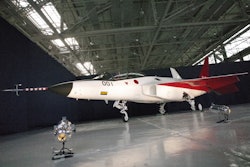Adopting Industrial Internet of Things, or IIoT, can provide a boon to a variety of companies that make industrial or commercial products, both new and old. The data collected from IIoT devices provides commercial and industrial controlcompanies with a greater understanding of how a client’s products function, allowing them to improve upon strengths and fix weaknesses. Also, IIoT can improve how a company services and supports customers. Many companies are so enthusiastic about IIoT that they believe it’s bringing about a sort of golden age of innovation.
Varun Nagaraj, CEO of Sierra Monitor Corporation, a company that makes IIoT protocol conversion gateways and remote-monitoring infrastructure, believes this “best of times” mentality is somewhat apropos, but also thinks companies might be a bit too eager. While he considers the present to be a great time for many industries to adopt IIoT, he also thinks the conversion shouldn't be forced. Too often companies make the jump to IIoT when it simply doesn’t fit their business model.
“I think that not everything needs to change and not everybody needs to convert their products into smart connected products,” Nagaraj tells Product Design & Development. “But even if it’s only 70 percent of the market that embraces IIoT, it’s still a large number and worth the enthusiasm.
A lot of companies can benefit from embracing IoT, and they know this. Despite understanding the rewards of IIoT, some refuse to make the adoption at their own peril. No other industry personifies this stubbornness more than “old school” commercial and industrial product manufacturers, according to Nagaraj. So why do these traditional companies refuse to change? For Nagaraj, there are several reasons.
One cause is that the companies are so content with how they’ve operated throughout the past, that they reject the change and resulting benefits that IIoT brings about.
“Too many are too cautious and say, ‘for 100 years, I’ve designed widget A, and that’s what defines me’ versus asking ‘how can I take advantage of this new thing?’” he says.
Another issue is that many traditional commercial and industrial operations lack the skilled workforce needed to work with newer technologies relating to software, the cloud, and analytics.
“Many old school companies are electro-mechanical companies and don’t have the technical capabilities to take advantage of the IIoT opportunity,” Nagaraj says. “Adding new skills, especially in diverse technical areas that are rapidly changing, isn’t so easy.”
Nagaraj believes companies need to do two things before they make the move toward IIoT. First, they need to figure out what they are hoping to accomplish through IoT. If the change would provide them with the benefits they’re seeking, then they move onto the next step: selecting a technology partner that offers an on-ramp suite that can help them with the transition. (An on-ramp suite helps companies adopt IIoT through hardware, software, and cloud capabilities.)
Sierra Monitor is seeking to become one of the top options for IIoT adoption aids through its recently unveiled IIoT On-Ramp Suite. Based on Nagaraj’s confidence in the company’s technology, getting customers to pick the company shouldn’t be an issue.
“Our IIoT On-Ramp Suite of products is the simplest way for an OEM to turn their products into ‘smart IIoT connected products,’” Nagaraj says. “That’s what the On-Ramp means – we enable our OEM customers to quickly join the IIoT highway. We minimize the risk and reduce the time required to take advantage of the IIoT opportunity.”
If experience working with IIoT is key, Sierra Monitors and its new “On-Ramp” should fare just fine because it has been involved for some time with “automation and control networks.”
“A point to make is that the industrial and commercial world has implemented ‘automation networks’ and ‘control networks’ for decades,” he adds. “So what is the IIoT in this context? Think of IIoT as Control Networking/Automation 2.0. It is the application of new internet and contemporary technologies like wireless, cloud, big data, and analytics to good old Control Networking/Automation.”
While Nagaraj is confident in Sierra Monitors’ new IIoT On-Ramp suite, and the state of IIoT in general, he believes there are a few things within the industry that warrant concern. One issue is data stewardship.
“We have to think about data stewardship – who actually owns the data generated by a device, what are the rules for sharing, and so on. But all of these are issues that have been solved in many industries before, and I think there is enough expertise to make sure these don’t become long-term issues,” he explains. “But it’s what we don’t know that is scarier. But if the unknown unknowns kept us from doing anything, we’d still be sitting in caves.”






















